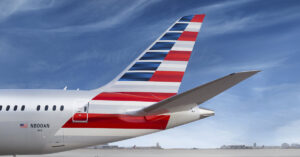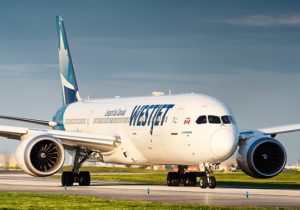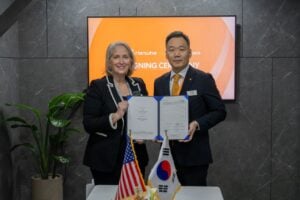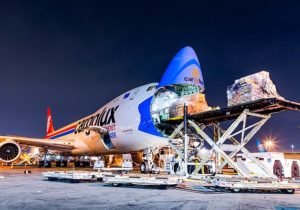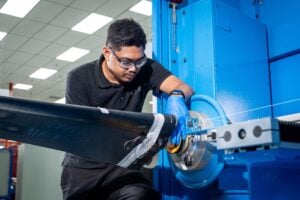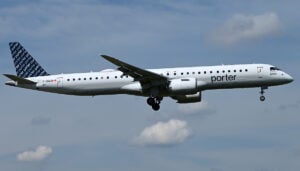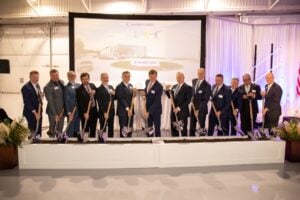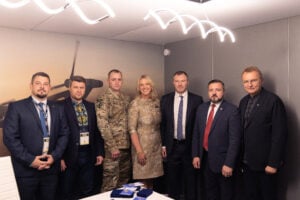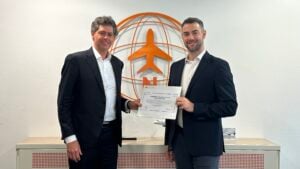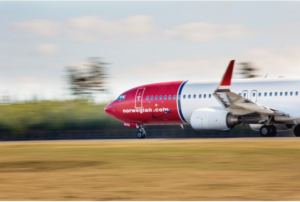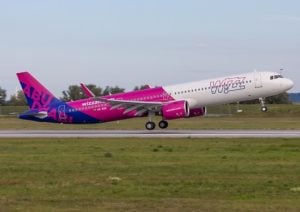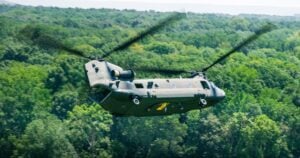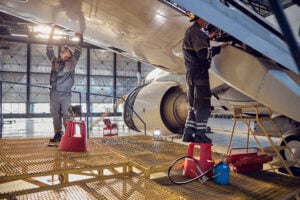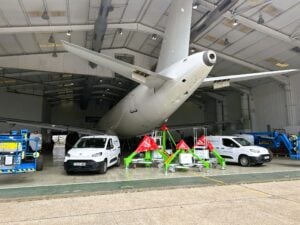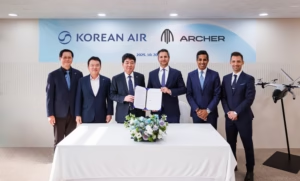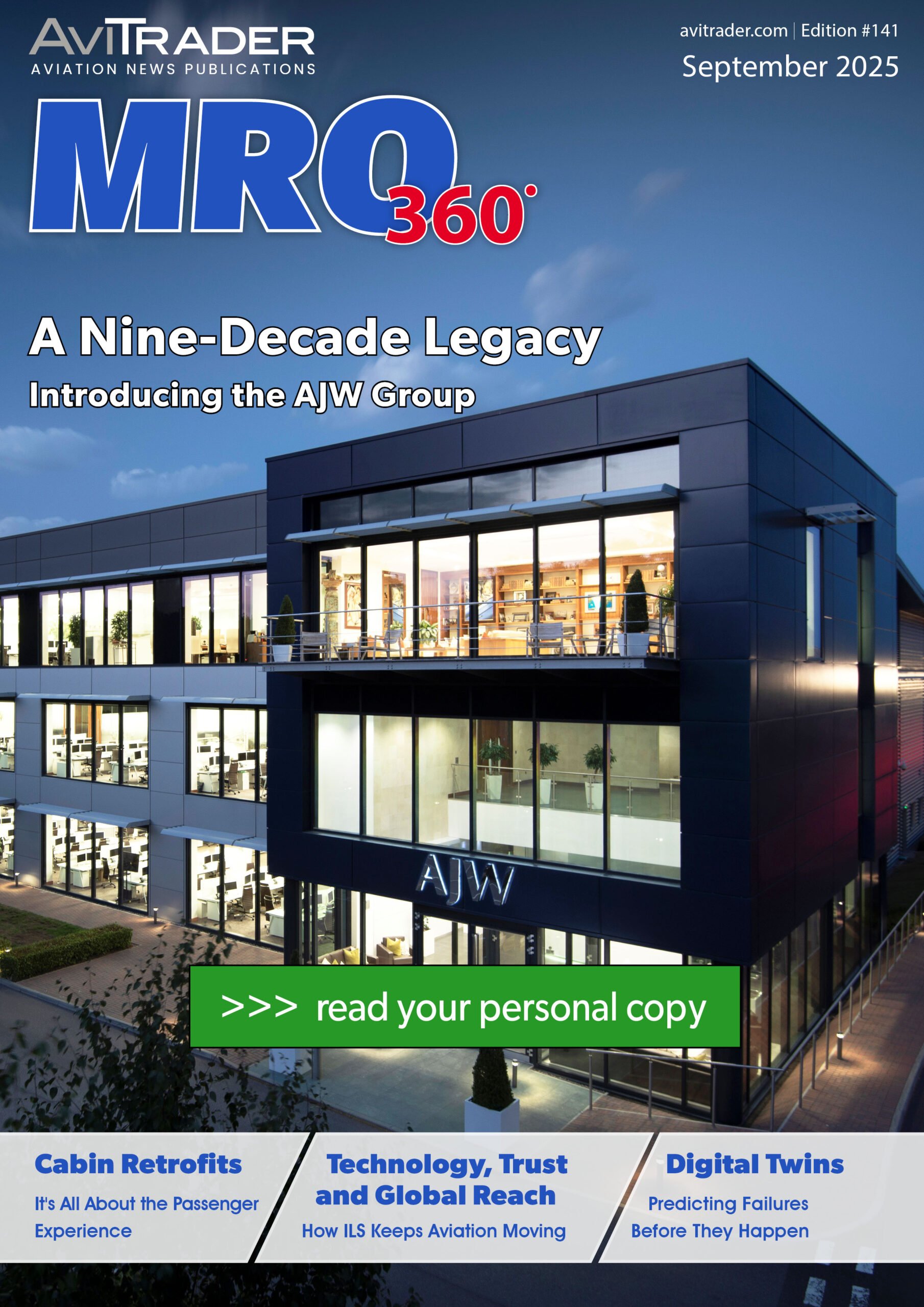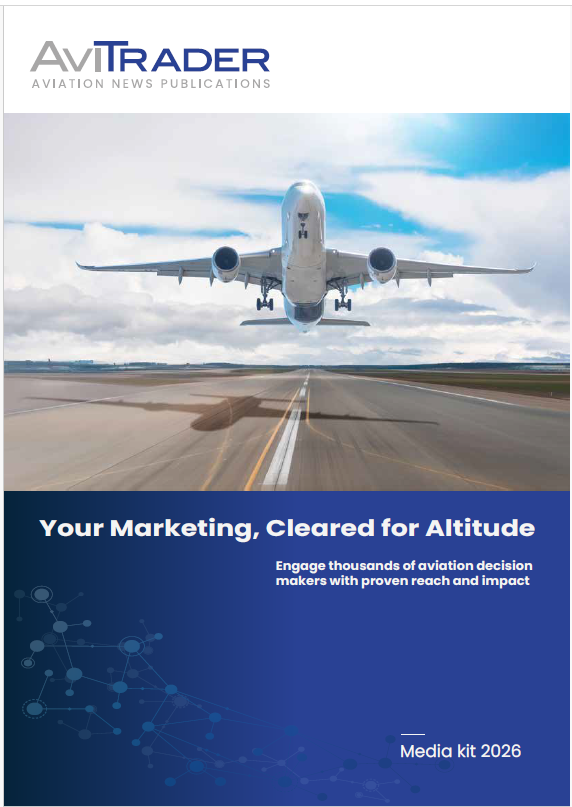A look behind the curtain
By David Dundas
Avionics, in particular the electronic equipment fitted to an aircraft, is a highly specialised field. When it comes to MRO services, we wanted to learn more about how companies specialising in avionics deal with specific problems related to electrical systems and components in today’s commercial aircraft. We are fortunate to have been supplied with a wealth of fascinating information from five highly respected operators in the field of avionics, and we hope the following will give you a valuable insight into the challenges they meet on a regular basis and how they deal with them.
Areas of focus and longevity
First off, we were curious to know how long our contributors had been operating in the field of avionics, and if there were any particular areas they specialised in. Emil Dickson, Business Development Manager at AAR Corp advised that their Component Services facility in Amsterdam has been in the avionics repair business for over 55 years. With regard to areas of expertise, Dixon informs us that AAR Corp: “maintains, repairs, and supports communication and navigation systems such as high-frequency systems (transceivers and receivers), auto pilot systems, flight systems, weather radar systems, warning and power supply systems. We also support instruments such as vertical and directional gyros, altimeters, audio systems, air data computers and several flight indicators.”
AJW Group has been around for over 90 years and as Simon Merriott, SVP Customer Service, AJW Aviation puts it: “We specialise in a wide range of avionics systems, including navigation equipment, communication systems, flight control computers, and displays. Our skilled technicians are adept at handling legacy systems as well as modern, complex integrated avionics platforms.” He adds that: “AJW Group has built strong relationships with key component OEMs. This enables us to offer a diverse portfolio of repair and testing services across dominant aviation platforms.”
It was in 1956 that Muirhead Avionics, part of AMETEK MRO began operations and David Bentley, DVP & Business Unit Manager at Muirhead Avionics, AMETEK MRO, tells us that the company’s “…capabilities cover navigation, communication, radar, flight data recorders, cockpit voice recorders, instrumentation and main cockpit displays and test equipment. We are also close to receiving a newly accredited UKAS approval for avionics calibration.” Our final contributor is Air Accessories & Avionics, a Broward Aviation Services Group Company, which has been serving and providing first-class repair quality and component reliability since 1992. The company is based in Miami, Florida and serves airline, OEM and parts broker customers worldwide. Marlon Bustos, the Accountable Manager at Air Accessories & Avionics expands on their field of expertise: “We specialise in WRT, HF Antenna Couplers, VHF, EDU, GCU, BCU, GAPCU, LCD Monitor, Antennal Pedestal, Radio Management Panels, Electromechanical and Pneumatics. In particular, we major in Rockwell Collins avionics equipment, especially radar components.”
Key success factors of a quality avionic repair shop
You will note that all our contributors are long-standing and well-established companies, with an individual operating history ranging from just over 30 years to just over 90 years, so who better to ask what the key success factors of a quality avionic repair shop are?
Simon Merriott sees having expert technical staff as pivotal, followed by the implementation of strict quality control. He expands further: “Access to advanced testing equipment is also critical, as state-of-the-art diagnostic tools, such as those at our MRO repair facility in Montreal, AJW Technique, allow for accurate issue identification and comprehensive repairs. Efficient turnaround provides quick service without sacrificing quality and ensures high levels of customer satisfaction. AJW’s strong supply chain management supports this by ensuring we have reliable access to spare parts, enabling seamless operations and prompt repair work. Lastly, comprehensive testing and troubleshooting procedures are essential and the ability to perform Level 3 repairs at a circuit card level, such as performing full functional tests with Automated Test Equipment (ATE), conducting manual circuit card analysis, and repairing these cards at a component level.”
David Bentley sees things slightly differently, identifying the construction of the company’s state-of-the-art facility near Heathrow Airport as a key move. He then highlights what has helped with his company’s success, including: “Our skilled workforce with OEM-trained technicians, acquiring a number of OEM approvals supported by our proven track record of consistent, and high-quality service. Significant investment in engineering, spares, LRU inventory and next-generation automated test equipment. Regulatory compliance with a wide range of approvals, UK CAA, EASA, FAA. EN9110, EN9120. Plus, our ability to support legacy equipment is underpinned by a strong product and people safety culture.”
Marlon Bustos has yet another reason for his company’s success, and that is staff retention, especially of senior engineers. As he puts it: “Our senior technicians have been with the Company since its origins, 30 years ago, and that is truly why we are able to back our overhauls with 24-month warranties and repairs with 12-month warranties. We believe the experience of our technicians and our reliability is second to none. We are also focused on the transfer of this knowledge and take pride in our training schemes.” Similar to the three others, Emil Dickson / Richard Heath put the company’s success down, among other things, to the skilled workforce. “An experienced and knowledgeable staff, high-quality and accurate test systems, a clean room, and access to the latest revisions of manuals, software, and parts required to complete the repair. AAR works hard to maintain all these contributing factors and attributes our experienced staff and OEM support as prime reasons for our success.”
Transitioning from mature to next-generation avionics
Advancements in modern technology are constant and the field of avionics has not escaped major changes. What we wanted to know was how companies specialising in avionics are able to transition from mature to next-generation avionics.
Simon Merriott highlights training as the key. “AJW leverages continuous training programs to keep our technicians proficient in emerging technologies. We also invest in the latest diagnostic and testing equipment compatible with newer systems, ensuring our MRO repair capabilities evolve in line with industry advancements. The Group’s expertise spans from older analogue electronics to the latest digital technologies, and our technicians receive regular training to adapt to these advancements. Predictive maintenance techniques enabled by data analytics and machine learning are incorporated into our operations to anticipate potential failures, ensuring seamless transitions and proactive maintenance of components and parts coming to our facilities.”
As many avionics companies specialise in differing sectors, so their options for remaining up to date in their working practices can differ considerably. Understanding this helps with David Bentley’s explanation for Muirhead Avionics’ strategy. “Muirhead Avionics aims to strengthen our strategic partnerships with avionics OEMs and automated test equipment suppliers by investing in infrastructure upgrades, software, and test adaptors. Leveraging our in-house engineering expertise, we will secure the necessary repair licenses and inventory supply agreements from the OEMs and efficiently integrate new-technology products into the workshop.”
Marlon Bustos explains the transition method adopted by Air Accessories & Avionics which “…works with the OEMs to secure approved repair contracts. This is underpinned by our investment in acquiring the latest ATE stations, training and tooling. Securing the trust from OEMs through the quality of the repair services we deliver places us in a good position to transition seamlessly to next-generation avionics and our team will be trained and ready.” For AAR Corp the solution is seen as being one of adopting a multi-prong approach. “We are upgrading both our hardware and software to evolve alongside the next-generation and to meet the latest standards. OEM support and access to IP and parts are crucial, along with staff training and awareness of next-generation fleet requirements,” comments Emil Dickson.
One of our contributors, Air Worthy, is an independent CAMO and does not carry out avionics repairs independently as it is not part of its approval and capabilities. Instead, Air Worthy is involved in selecting an organisation that is correctly qualified for certain avionics repairs, in the case where an aircraft the company is managing needs such a service. Lucia Soffientini, Continuing Airworthiness Manager – Avionics Engineer explains the situation for Air Worthy in relation to mature and next-generation avionics. “Air Accessories & Avionics works with the OEMs to secure approved repair contracts. This is underpinned by our investment in acquiring the latest ATE stations, training and tooling. Securing the trust from OEMs through the quality of the repair services we deliver places us in a good position to transition seamlessly to next-generation avionics and our team will be trained and ready.”
The importance of the relationship with an avionics OEM
According to Marlon Bustos, “Avionics OEMs have spent years researching and developing safe components for the aviation industry and it is essential to work closely with them as their training, tooling, data and component maintenance manuals (CMMs) are essential to underpin the high-quality repairs that Air Accessories & Avionics can then put under warranty.” Meanwhile, Emil Dickson is very succinct in regard to his opinion of the importance of this relationship. “Without OEM support on most avionic components, it is not possible to perform the work. AAR is privileged to partner with several leading OEMs so we can support customers to the latest OEM standards.” As for Lucia Soffientini, this relationship is critical: “It is very important and Air Worthy has good relationships with the major avionics OEMs, as it enables us to stay aware of any upgrade they may propose.”
Simon Merriott at AJW Aviation feels that the strong ties with key OEMs ensures the company can offer a comprehensive service portfolio to keep up with industry growth to maintain its position as an industry leader. He further explains: “Maintaining a strong partnership with OEMs provides access to essential resources like updated technical documentation, training, and proprietary tools. These relationships enable our repair shop to perform certified repairs that meet OEM standards, enhancing reliability and safety for our customers. Furthermore, direct communication with OEMs can lead to faster resolution of technical issues and support in sourcing genuine parts, ensuring the highest quality repairs.” Further, David Bentley is very concise yet very clear on the importance of such a relationship. “Muirhead Avionics believes the long-term relationships we have established with OEMs are key to our business success and we work hard to sustain multiple repair licences and approvals with all the major avionic equipment OEMs,” he says.
At what point should an avionic be declared “beyond economical repair”?
As with so many aspects of aircraft MRO, costs are a key factor, and avionics does not escape this problem. In particular, we have the case of deciding when an avionic has reached the point where it’s repair is no longer a financially viable solution. We wanted to know at what point avionics companies felt that an avionic repair was not an option, financially speaking. Emil Dickson is very clear on the matter. “The avionic is declared BER when the cost of repair exceeds fair market (serviceable) value or factory new condition components. This can fluctuate depending on USM market conditions and customer acceptance of scrapping their own serial numbers.” Lucia Soffientini is equally clear on the matter: “By definition, BER generally refers to a situation where the cost of a necessary repair to an item is 75% or above the market value or original procurement cost of the item. For an avionics component, we might additionally consider that the electronics may soon become obsolete and no longer procurable.”
Simon Merriott is of a similar opinion regarding the point where an avionic should be declared BER. However, he goes into further detail to explain how there is an alternative solution to the problem which can help to reduce costs: “The decision [to class an avionic as BER] is influenced by the extent of damage, availability of replacement parts, and total repair hours required. Comprehensive evaluations, including cost analysis and technical assessments, also guide the decision to determine if pursuing a repair is justified or if replacement is the more viable option.” He adds that: “BER is more common on legacy components where market availability has reduced the fair market value of the components. AJW Technique has a robust process enabling the use of used-serviceable material at a SRU (Shop Replaceable Unit) level, which can avoid components being declared BER. The Group’s extensive experience in this evaluation process ensures we make informed decisions that optimise cost-efficiency for our customers.”
It is clear from all the replies everyone agrees that avionics are declared “beyond economical repair” when the cost of repairing the unit exceeds its replacement value or when repair is not feasible due to other factors. David Bentley goes on to explain further about deciding factors: “Typically, these factors include repair costs exceeding replacement value, obsolescence, irreparable issues beyond technical feasibility, recurring failures affecting reliability, and economic viability where investing in newer technology offers better long-term value, or upgrading to newer, more advanced systems is a more cost-effective solution.” However, Marlon Bustos has an interesting point to make with regard to the fluctuating cost of components and how this can affect the BER decision-making process. He states that “…we have seen components deemed BER when the repairs can be undertaken at a fair market cost. This will impact the industry in the long run because the cost of the new component will go up due to the lack of serviceable components available in the market. Something could be declared BER today, but next year the market price will have gone up and then it will be worthwhile undertaking a shop repair.”
Supply chain problems
Finally, we wanted to establish if those companies involved in avionics were suffering from many of the supply chain problems experienced by other aircraft MROs. In particular we wanted to find out if there are sufficient used avionics available to replace rather than repair a component when a repair is not economical?
For David Bentley at Muirhead Avionics, there is no clear-cut answer. He explains: “This situation is closely monitored by our team at Muirhead Avionics, and it depends on several factors including the type of aircraft and the market demand for the particular avionics units. For widely used aircraft types and avionics systems, the market normally has a good supply of used or refurbished units. For older or less common systems, finding suitable replacements can be challenging as production may have ceased, and used units might be scarce. In these cases, the knowledge to perform technical repairs on legacy equipment comes back into play.” Marlon Bustos at Air Accessories & Avionics is similarly of the opinion that there is no simple ‘yes’ or ‘no’ answer, advising that: “It all comes to the application, or the type of aircraft that the avionics component going to. Often it is best to purchase an SV unit and use it for parts, because purchasing new from the OEM can cost more than the actual unit. It’s more economical for both the shop and the airline to use a serviceable unit such as a circuit board rather than commission a specialised repair that requires dedicated test equipment and intensive labour hours to find a failure.”
Emil Dickson is optimistic with AAR Corp’s response and supply chain problems do not seem to affect the company in this scenario. “Depending on the type of units or fleet type, there are surplus materials on the market to use instead of repairing. Factors to consider include modification standards between the units and age or serial number,” he states. Dixon is not alone as AJW Aviation’s Simon Merriott feels that there is “a robust market for used and refurbished avionics, especially on legacy platforms. These components can provide cost-effective alternatives when repairs are not economically viable. However, availability depends on the specific type of equipment, its demand, and overall condition.” He goes on to explain that AJW is a leader in the management of aircraft teardown, increasing the availability of used components, and maintains strong relationships with certified suppliers and brokers to source high-quality used avionics that meet safety and performance standards. This network helps ensure that we can provide our customers with reliable options for replacement when necessary.”




